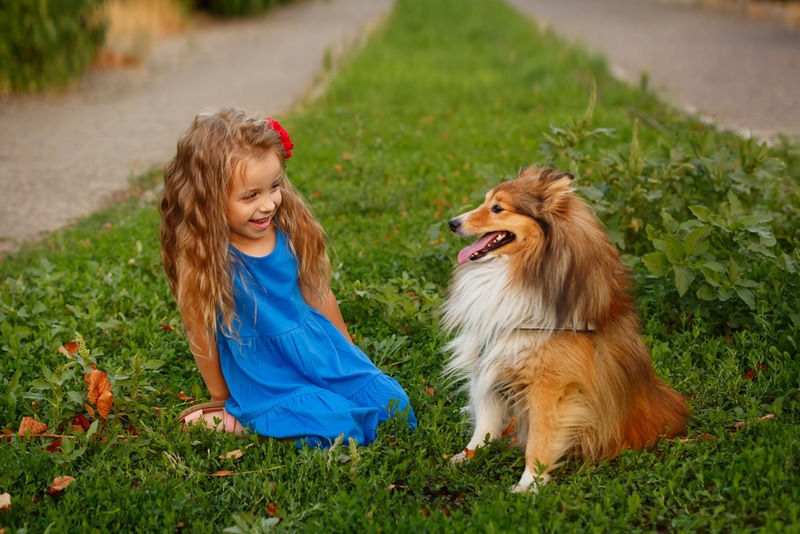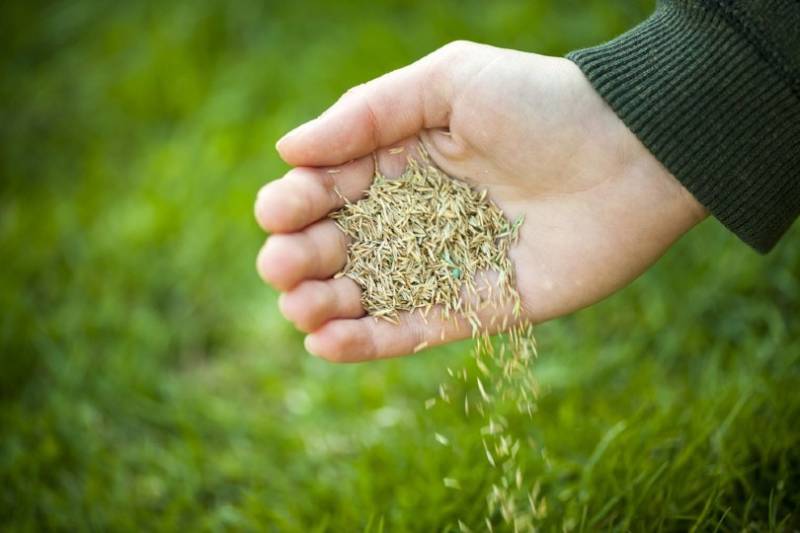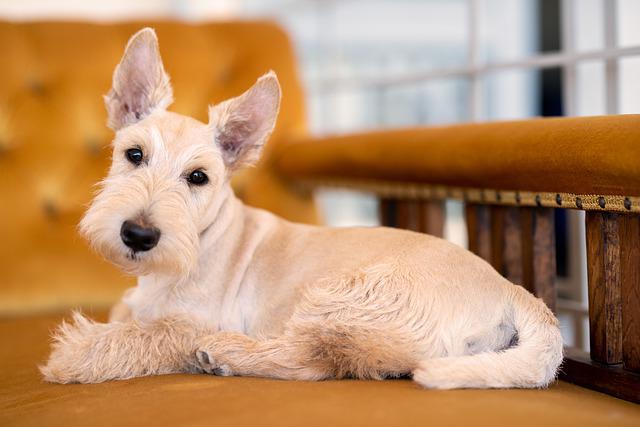15 Shaggy Dog Breeds: Pictures & Facts
By Kit Copson
Updated on
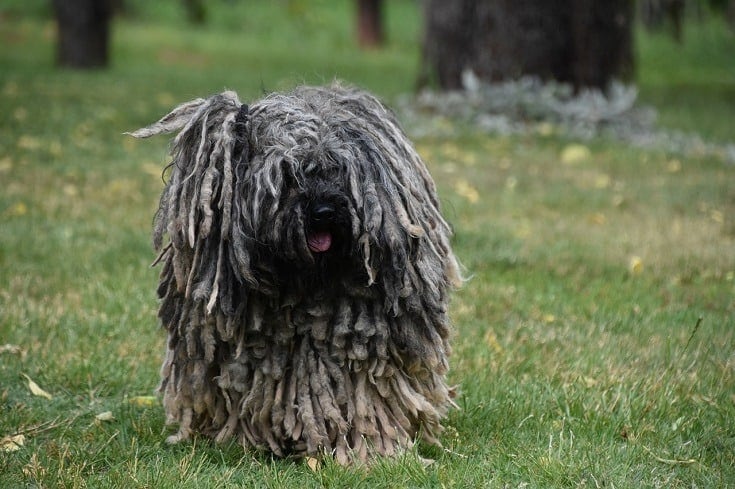
If there’s a pooch guaranteed to get folks everywhere swooning, it’s a shaggy one. Shaggy dogs are not only breathtaking in appearance, but each breed has an exciting story to tell. Some, like the Old English Sheepdog, are truly iconic—who remembers the Dulux dog?
If you share our love for shaggy dogs and are curious about the different breeds’ histories, get stuck into these 15 adorably untidy canines.
The 15 Shaggy Dog Breeds:
1. Old English Sheepdog
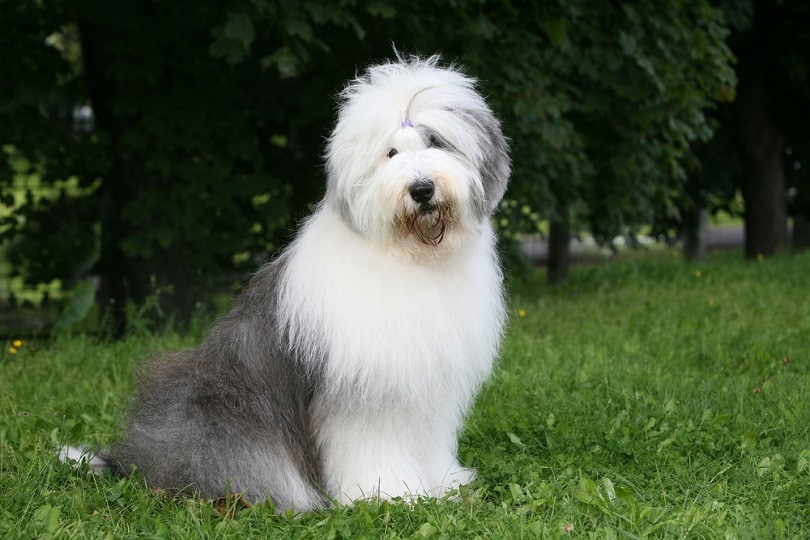
The Old English Sheepdog may be the ultimate British dog breed, having been developed (most probably) in Cornwall, Devon, and Somerset, but it’s actually thought that this shaggy pooch may descend from European, Russian, and Scottish dogs. Contrary to what the name suggests, the OES was bred as a drover—a role that involved accompanying cattle to market—rather than a sheepdog.
Old English Sheepdogs are generally considered to be kind, gentle, and affectionate family dogs as well as capable watchdogs. As a longhaired, double-coated dog, the OES needs to be brushed daily. You might want to consider taking your OES to a groomer for professional clipping and maintenance.
2. Briard
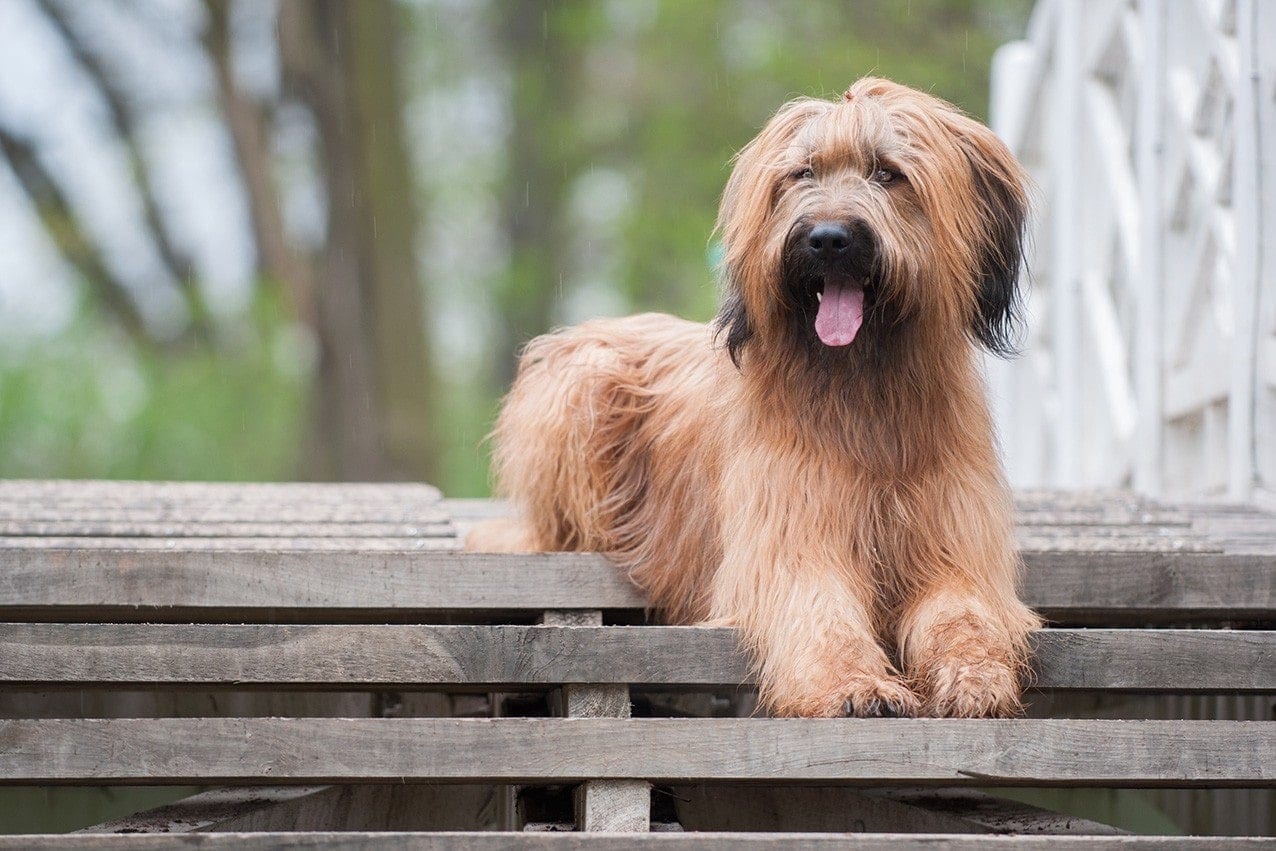
A pasture dog, the Briard was developed in the north of France for shepherding. Another of the Briard’s roles was to guard flocks, so today’s Briards have inherited a keen sense of their surroundings and can be a little reserved around new people. On the other hand, with a loving family, the Briard is devoted and companionable.
The Briard’s wavy double coat doesn’t shed much, but it does need to be brushed thoroughly daily or at least every other day to stop it from tangling.
3. Afghan Hound
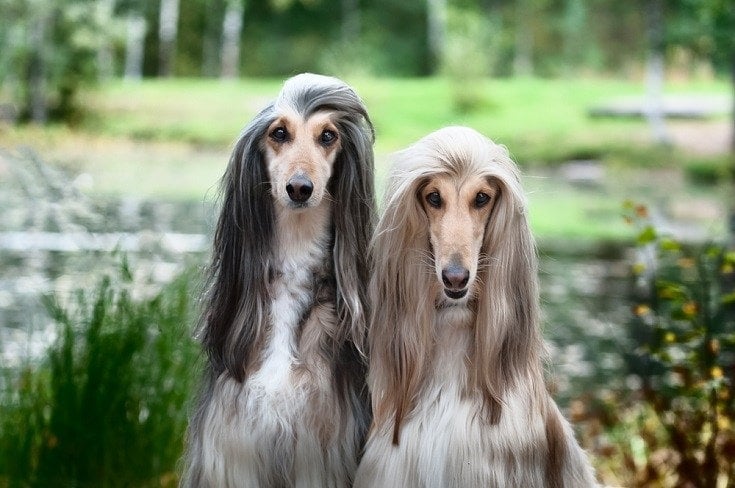
The silky-coated Afghan Hound is an ancient breed hailing from the historical region that is today made up of India, Pakistan, and, of course, Afghanistan. That said, it’s not certain exactly where in this region the breed was developed as hunting dogs. In addition, the Afghan Hound’s startling beauty caught the attention of royals and aristocrats who kept them as symbols of wealth and status.
Well-socialized Afghan Hounds are often sweet-natured and loyal with a hint of goofiness, though they are known for possessing a stubborn, independent streak, too. Their long, silky coats must be brushed regularly to keep them in good condition.
4. Otterhound
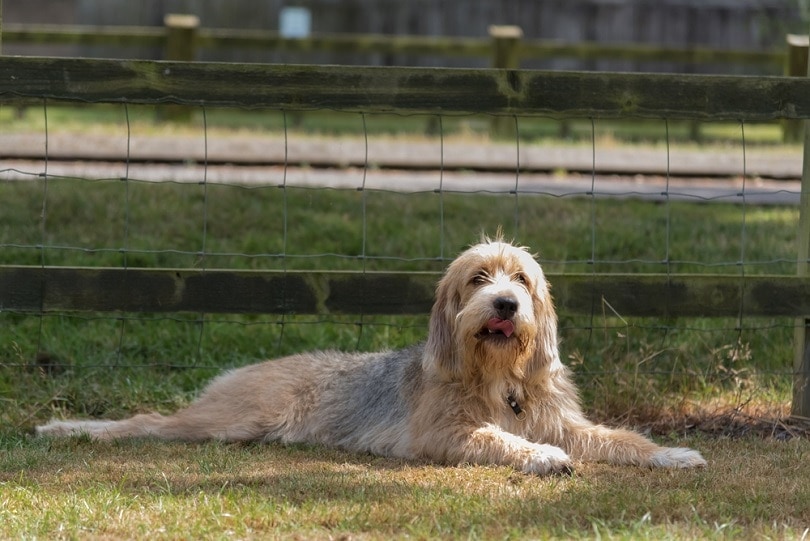
Today’s Otterhounds are the descendants of English dogs from the medieval period. At the time, otter hunting was deemed necessary to prevent the fish population from decreasing, so the Otterhound was developed to help with this mission.
These canine remnants of medieval history are incredibly rare these days—so rare that the breed is endangered. Otterhounds are generally friendly, energetic dogs with rough double coats that don’t need as much brushing as some other shaggy breeds. A few times per week should suffice.
5. Komondor
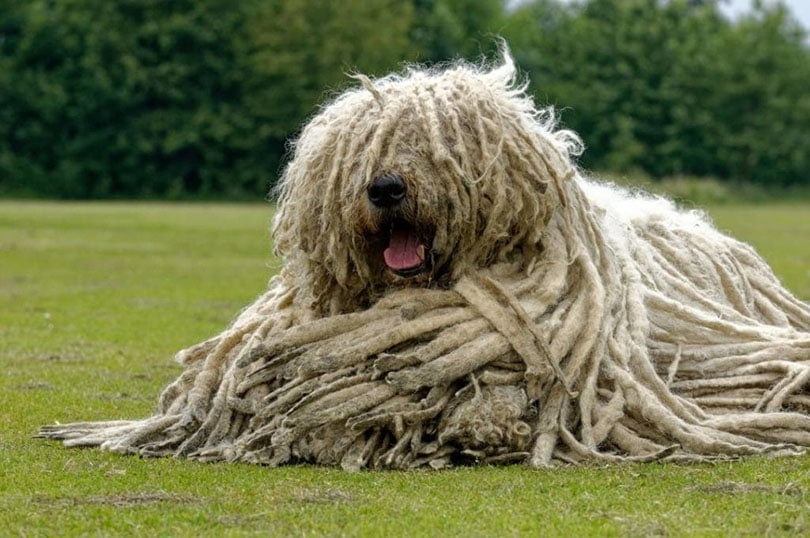
The independent but affectionate Komondor is one of the most unique-looking dogs you could ever come across. Distinguished by their mop-like coats, these dogs don’t need to be (and shouldn’t be) brushed, but they do require special coat care involving frequent bathing and the process of splitting the hair clumps at a young age to ensure the cords develop nicely. It can take up to 2 years for the cords to be fully developed.
Komondorok (plural form) originated in Hungary where they were used as flock dogs, a role that involved protecting sheep from predators. Their coats are adapted to help protect them from the elements and the attacks of predators, but they also provide camouflage (in a flock of sheep, the Komondor wouldn’t be easy for predators to distinguish).
6. Bearded Collie
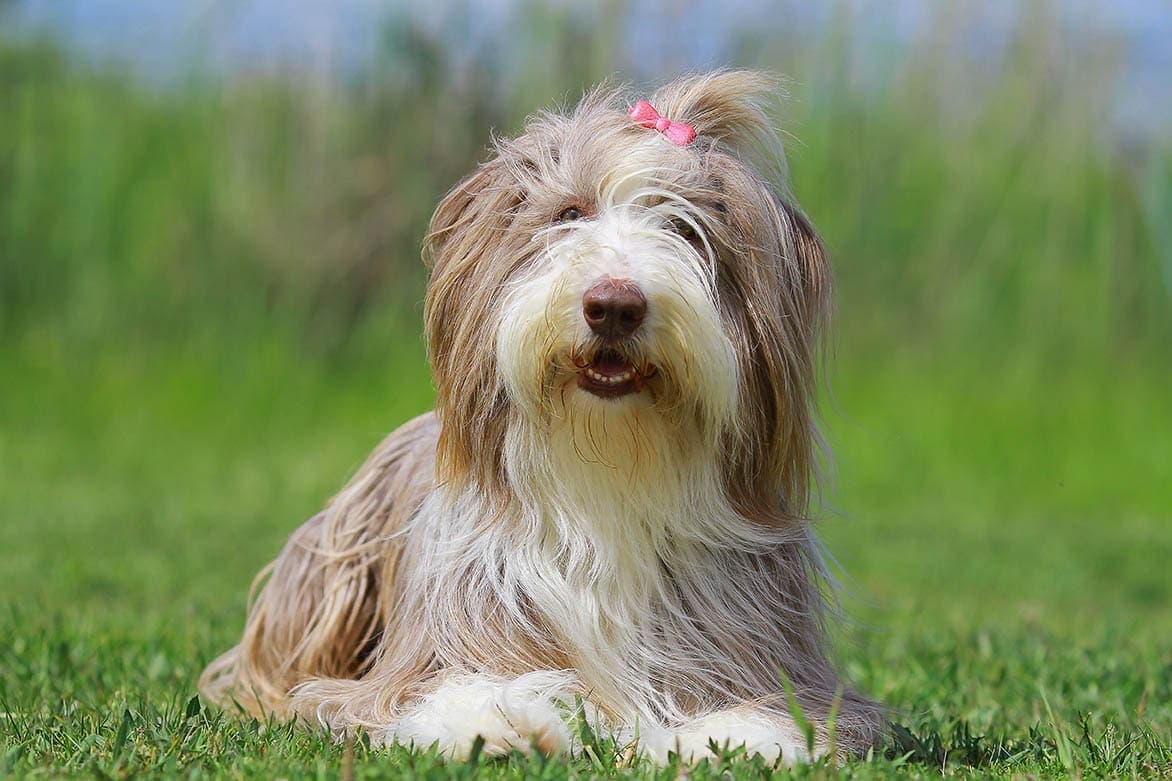
The Scottish Highlands are where the Bearded Collie, a silky, longhaired dog, originated. Bearded Collies may have descended from Komondorok and Polish Lowland Sheepdogs that came to Scotland in the 16th century.
Like the Old English Sheepdog, Bearded Collies were bred for droving and herding cattle. This role required a solid work ethic and sturdiness both in body and spirit, and the Bearded Collie still has these traits today. Bearded Collies need to be brushed thoroughly and detangled (detangling sprays may help with this) once per week, but they also need a quick daily brushing for maintenance.
7. West Highland White Terrier

The Westie is a Scottish dog; a relative of other Scottish terriers including the Scottish, Cairn, Skye, and Dandie Dinmont. In the 18th century, Westies were bred by the Malcolm clan to hunt and exterminate rats. As such, despite their small size, Westies are infamously hardy, courageous, and agile. They’re also incredibly popular for their merriness and companionability.
Westies have medium-length double coats that can get tangled and matted if not brushed daily. It’s common for Westie parents to get them clipped by a professional groomer. On the other hand, they don’t need to be bathed very often.
8. Bergamasco Sheepdog

Another corded breed like the Komondor, the Bergamasco Sheepdog is an ancient breed whose ancestors were from the Middle East, though the breed as it is known today has been around the Italian Alps for a long time, especially in Bergamo, a town close to Milan. Though the Bergamasco is related to the Komondor, the former’s cords are flat rather than rope-like.
Fortunately, the Bergamasco doesn’t need a lot of maintenance because their coats don’t need to be brushed. However, when the dog is around a year old, the coat needs to be separated into mats to form the corded coat. As socialized family companions, Bergamascos are playful and patient and are known for enjoying interacting with children.
9. Polish Lowland Sheepdog
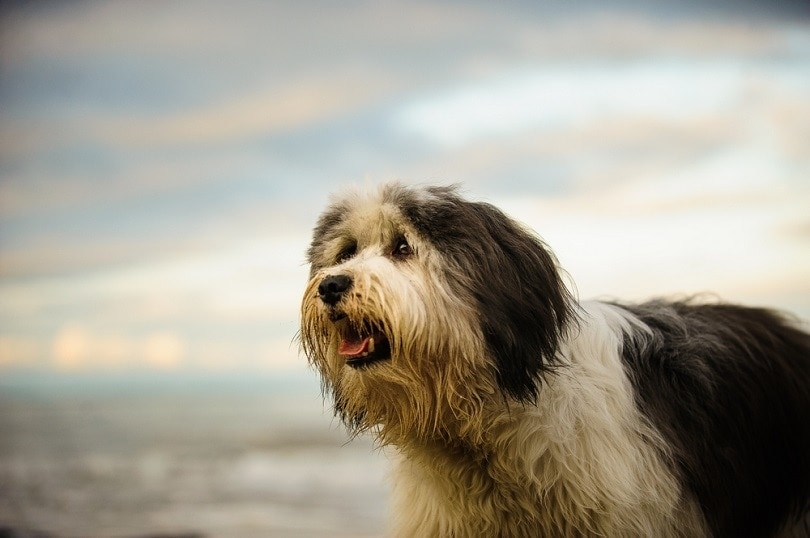
When the Huns came to Central Europe in the fourth and fifth centuries, they brought with them the dogs that would be bred with dogs native to what is now Poland. This is most likely the combination that created the Polish Lowland Sheepdog, a longhaired, double-coated dog developed to herd and watch over flocks.
Smart and self-assured, the well-raised Polish Lowland Sheepdog makes for a sturdy and affectionate companion. Polish Lowland Sheepdogs’ coats can be a bit tricky to care for because they have very thick coats that can become home to bits of debris as well as mats and tangles. Regular brushing is a must for this breed.
10. Shih Tzu
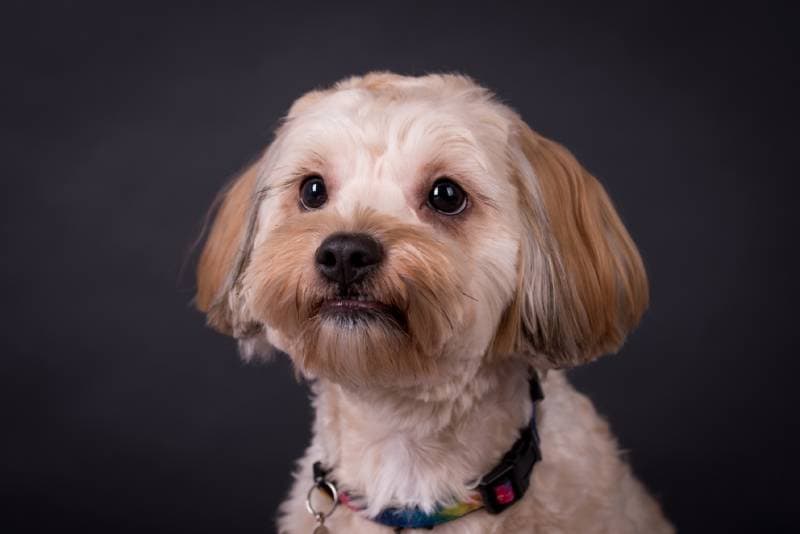
The Shih Tzu was developed in China, and the breed’s ancestors include Tibetan dogs. In China, Shih Tzus were highly valued by royalty and were common companions to emperors, who ensured these sweet, easygoing lap dogs lived a life steeped in luxury. Today, they remain ever-popular, ranking at number 20 out of 200 dogs on the American Kennel Club’s popularity ranking.
Shih Tzus are low-shedding, but they do need to be brushed regularly if you don’t get their long coats clipped. Some Shih Tzu parents prefer to get their pooches’ coats cut into shorter styles to make them easier to maintain.
11. Spanish Water Dog
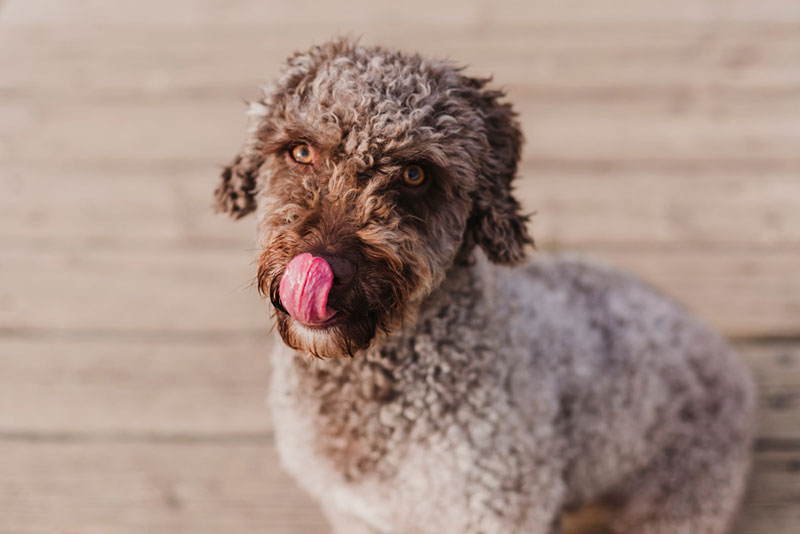
Despite the name, the Spanish Water Dog’s exact origins are murky. Theories point to a possible introduction to Spain either by North African Moors or Turkish traders, but nothing is set in stone. One thing’s for sure—this is a very old breed. The versatile, hardworking, and cheerful Spanish Water Dog has been used as a herding dog and a water retriever.
Though not as obviously mop-like as other corded breeds, the Spanish Water Dog does have a corded coat. It’s up to you whether you let the coat grow and develop cords or get it clipped short.
12. Barbet
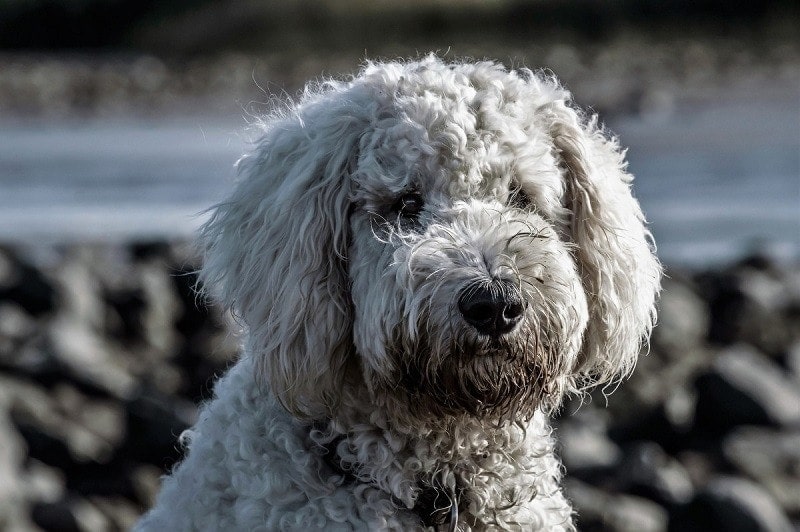
Another French breed, the Barbet has been referenced in scripts dating back to the 1500s which detail how the breed’s original purpose was as a water hunter. This explains why the Barbet has a weather-resistant, curly (or sometimes wavy) coat that varies in length from medium to long. This dog doesn’t shed much at all but does need to be brushed and combed daily.
Personality-wise, each dog is unique, but Barbets are said to be very amiable, smart, and calm. As long as they’re well-socialized, Barbets get along well with everyone in the family and are fairly open to meeting new people.
13. Schapendoes
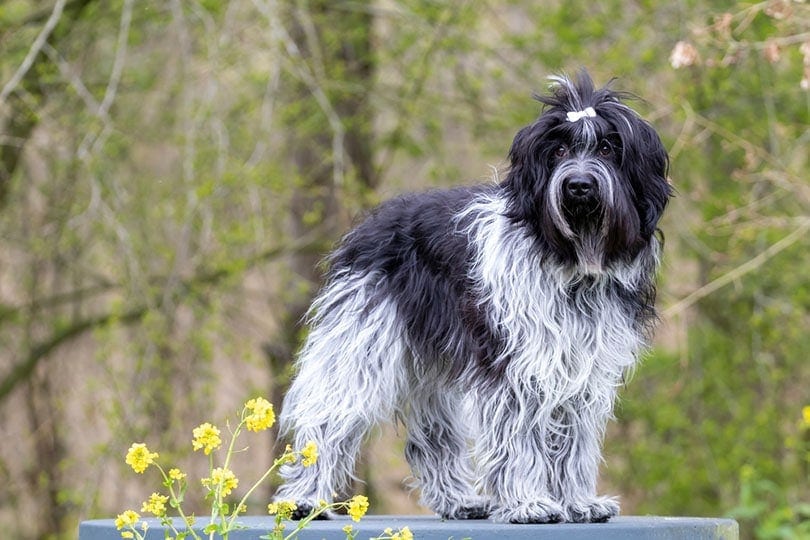
The Schapendoes also goes by “Dutch Sheep Dog” because they were very common in the country in the late 19th and early 20th centuries. A sheep herder by “trade”, the Schapendoes is a dog with bags of energy and a solid work ethic. They’re also said to be very affectionate family dogs with a merry disposition and a good sense of fun.
Schapendoes have long double coats that don’t shed heavily. Their coat care needs are moderate, and they only need to be brushed through a few times weekly to keep it from tangling and matting.
14. Puli

The final corded dog of our roundup is the Puli, an ancient breed with its origins in Asia. Pulik (plural form) could have been introduced to Hungary as far back as the 9th century or even earlier. They worked on Hungarian plains as sheep herders, and their coats are adapted to help them tolerate weather extremes.
When the young Puli starts to get an undercoat, the coat begins to mat—this marks the start of their cord development. At this point, you can start separating these mats or clumps to help the cord form. As companions, Pulik are often very faithful, family-oriented dogs. They’re also likely to sound the alert if they’re suspicious of something or someone.
15. Cairn Terrier

Like other terriers, the Cairn is a plucky little soul with a cheerful disposition and strong work ethic. They’re known for liking to be kept busy because they were originally bred centuries ago in Scotland as rat-catching dogs, just like the Westie. However, the Cairn’s job was more specific; they were used to hunt rodents inside rock piles (these were used as grave and boundary markers) known as “cairns”.
The Cairn Terrier has a medium-length, wiry double coat that needs to be brushed and combed at least once per week. You might want to recruit a professional groomer to strip the coat now and again, which helps keep it in good condition.
Conclusion
One thing that has become clear over the course of our research is that, though being somewhat untidy is all part of the charm, most shaggy dogs require frequent coat maintenance to prevent them from becoming too disheveled.
If you’re considering welcoming a shaggy dog into your home, we recommend reaching out to rescue organizations and shelters—you’re sure to be spoiled for choice!
Featured Image Credit: kidsnewshu, Pixabay

